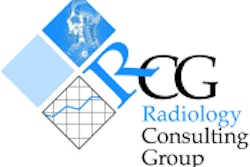An Objective Structured Clinical Examination (OSCE) serves as both a measure of performance and a teaching aid for residents who are working on their reporting skills. In a study published on Radiology Online, a group from Indiana University in Indianapolis shared their experience with a clinical performance exam.
"Approximately 20% of (preventable deaths in hospitals)...are attributable to errors or diagnosis and miscommunication," wrote Kenneth Williamson, Ph.D., and colleagues from the university’s Education and Research Institute and radiology department. "Radiologists play an important role in the delivery of quality healthcare. Radiologists who dictate reports have a responsibility to optimize the information in their reports," (Radiology Online, October 24, 2002).
This pilot OSCE program involved 20 x-ray cases selected as good examples of various elements in radiology reporting, such as urgent findings, discrepant requisition, or mismatched patient information. Twenty-nine residents were selected to take the test; the majority were in program year (PGY) 2-3 (20 subjects). Six subjects were fourth-year residents and three were PGY 5. Five volunteer faculty members, specializing in chest, emergency, bone, and breast imaging, acted as the graders.
"It was decided to impose a 1-hour time limit on the task, because this time was deemed reasonable for an experienced radiologist to report findings in 20 cases," the authors explained.
Each subject was presented with the 20 cases at a lightbox, and was given a handheld tape recorder. The subjects were asked to read the radiographs to the best of their ability, and report what they saw as if they were assigned to serve in the emergency department.
Possible scores ranged from zero to 20. One point was assigned to the subject for the following:
- Each complete report dictated (partial reports received a zero).
- Each well-specified impression, defined as a report that clearly stated a diagnosis or differential diagnosis.
- A correct finding in an urgent case.
- Each time the resident dictated that the referring physician had been called regarding the results.
- Whenever the resident flagged a discrepancy in the dictation.
The results showed a trend toward better performance with increasing experience. The overall F test was significant for the mean number of cases completed (P= .006), the mean number of well-specified impressions (P = .001), and the mean number of urgent or discrepant findings noted (P = .015).
Second-year students completed a mean number of 14.5 cases (standard deviation ± 3.14), offered well-specified impressions in 10.9 cases (SD ± 3.25), and correctly determined urgent or discrepant findings in 4.1 cases (SD ± 2.13).
In comparison, PGY 4 residents completed a mean number of 19.0 cases (SD ± 2.45), had well-specified impressions in 15.3 instances (SD ± 5.47), and identified urgent or discrepant findings in 5.0 cases (SD ± 1.41).
"The strength of these data prompted our residency program directors to adopt OSCE to be annually administered as a component of the curriculum," the authors stated. In addition, the residency curriculum was expanded to include an orientation on reporting in five core rotations.
After this pilot study, the group did tweak the OSCE: Sessions will be conducted with five residents at a time with five identical sets of materials. The test should now take less than two weeks to complete. In addition, the number of cases was increased, and a debriefing session will be held at the end of the OSCE.
In an interesting aside, a fourth-year resident dismissed the task, saying, "We don’t really have to do this (test), so I don’t care," according to the authors. This subject was removed from the final analysis.
Resident training issues will be the topic of several presentations at the 2002 RSNA meeting. A group of Ohio researchers will present an InfoRad exhibit on an introductory Web-based curriculum in pediatric radiology (space 9218ED-I). A group from New York City will discuss its Web-based software that is designed to improve communication and documentation of preliminary CT reports by residents during off-hours in the ER (paper 531). In a similar vein, Arizona researchers will talk on resident interpretation of after-hours body CT exams from the ER (paper 856).
By Shalmali PalAuntMinnie.com staff writer
November 20, 2002
Related Reading
Hands-on training doesn’t improve board scores in obstetric ultrasound, November 12, 2002
Dutch doctors suggest shortening medical training, November 4, 2002
Radiology Sourcebook: A Practical Guide for Reference and Training, September 26, 2002
Report urges medical schools to revamp doctor training, May 17, 2002
UK's junior doctors frequently misdiagnose wrist injuries', January 11, 2002
Copyright © 2002 AuntMinnie.com



















